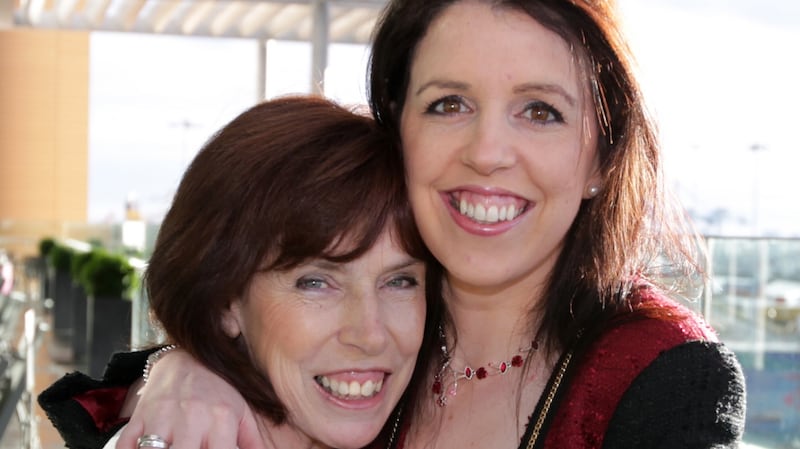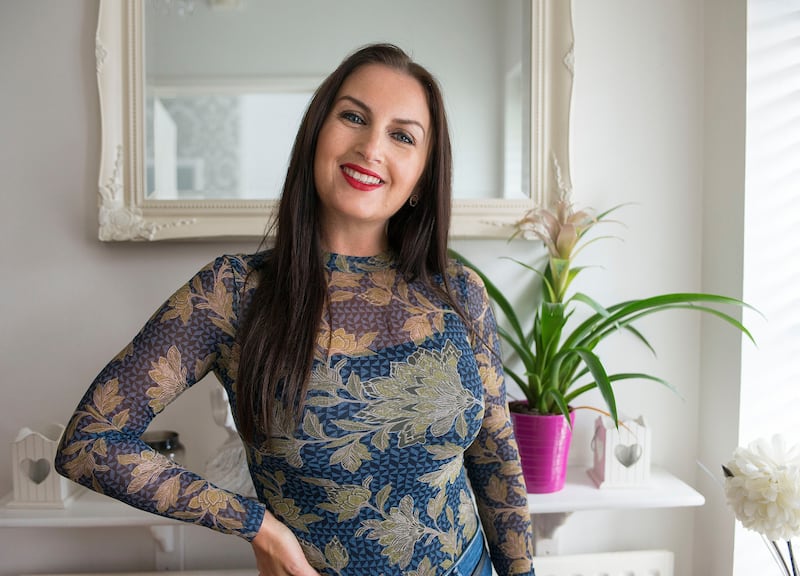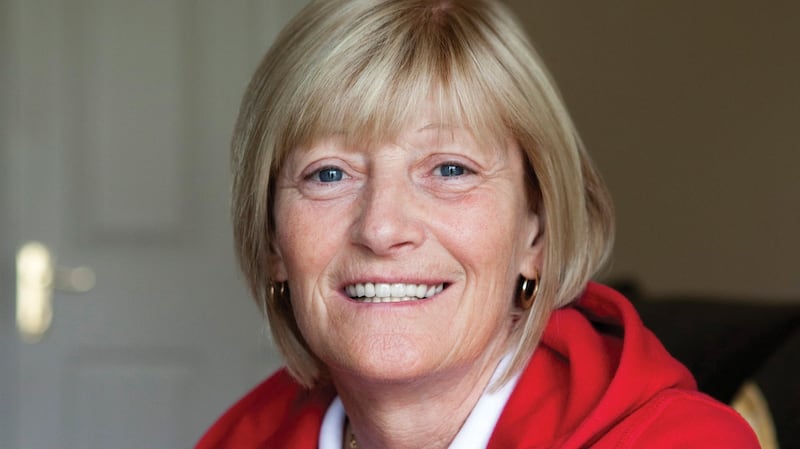Almost 10,000 people are affected by stroke every year in Ireland and as September sees the start of Irish Heart Month, the Irish Heart Foundation (IHF) is hoping to raise awareness about the condition and educate people about the need to look after their heart health with the campaign "Let's Strike Before Stroke".
The 28-year-old

Karen Donoghue from Dublin is well aware of the dangers as while the stereotypical image of a stroke victim is elderly and inform, she was affected when she was just 28 years old.
Initially believing she was experiencing the ill-effects of a hangover, Donoghue ignored the symptoms until her mother persuaded her to go to the doctor. “One night in August 2011, I went out for a few drinks with some friends,” she recalls . “The next morning, I felt awful and thought I had a hangover even though I didn’t drink much. That evening my left hand started to feel a bit numb and I still wasn’t too concerned, but the next day I had pins and needles in my left leg and felt dizzy. I began to think that it was more than a hangover and rang my Mam and who took me to the doctor.”
Unaware that she was showing early signs of stroke, Donoghue wasn’t concerned when the GP asked her undertake a few basic tests – but although she passed them all, he referred her to casualty as a precaution.
“The doctor thought I should go to hospital for further checks so I had some tests and a CT scan,” says Donoghue. “But shortly afterwards I began to deteriorate, so I was admitted and booked in for an MRI the following morning – by which time I was completely paralysed down the left-hand-side of my body – it was terrifying.”
The MRI revealed that Donoghue suffered a mild stroke, which luckily was caught early, and after two weeks in hospital, she was referred to the National Rehabilitation Hospital (NRH).
But then things took a turn for the worse.
“After a week at the NRH, I went home for the weekend when suddenly I began to feel really sick and the left side of my head went numb,” she says. “I was rushed to hospital and not long afterwards I slumped over – this is when my second stroke happened.
“I couldn’t talk or move properly and the left side of my face had crumpled, so I couldn’t move at all. I was put into the High Dependency Unit where I was monitored closely as there was the risk that I might have another stroke.”
Unable to move, Donoghue was under constant observation until she was well enough to be referred to the NRH to begin the long road to recovery.
Thankfully, a combination of determination and physiotherapy has paid off and her lengthy ordeal is now a distant memory.
“I have improved greatly and am almost completely back to normal,” she says. “My cognitive side is 99 per cent recovered and thanks to the quick action of my doctor and all the support I received, I am now back to good health.”
The 42-year-old

Trisha Kiernan also knows too well the damage a stroke can cause. Just 42 years old, the mother of two has always been an advocate of a healthy lifestyle – she doesn't smoke or drink, exercises regularly and has been vegetarian since she was a teenager.
But it was an injury caused during a yoga workout which tore an artery in her neck and caused her to have a stroke.
“I lead a very ‘clean’ lifestyle, have always looked after my health and have been told I look younger than I am,” she says. “So when I presented to hospital with severe headaches, no-one thought I could be a stroke candidate and I was told I probably had a trapped nerve in my neck and should go home and rest.
“But the headaches persisted and a week later when visiting my mum, I got out of the car and felt a strange feeling down my left side and then tumbled into the house and my speech became slurred. My mum called an ambulance and when it arrived she asked paramedics if I was having a stroke, but they said no as I didn’t have a drooping mouth.”
Trisha, who works as a beauty adviser, was taken to A&E where she was placed on a trolley until she was finally seen by a doctor, who realised she needed urgent attention.
“I was left on a trolley for 72 hours and couldn’t even get off to go to the toilet,” she recalls. “The staff thought I had a migraine and were treating me with paracetamol until a doctor walked by and knew from my hugely swollen left arm and the fact that I couldn’t speak or see properly that I was suffering from something a lot more serious.
“I was rushed for an MRI where it was discovered that I had suffered a stroke. So I was immediately transferred to the acute unit and treated with medication and eventually when I was well enough, I started physiotherapy.”
The tear in Kiernan’s artery was probably caused by a yoga workout, but conversely, it was also her love of exercise that helped her to recover as this, combined with sheer determination, has seen the Dublin woman back on her feet in less than six months.
“It’s likely that my stroke happened as a result of doing headstands, which is something I will never do again. Nor will I lift weights as while I was in hospital a young woman presented with stroke symptoms which had been caused by lifting kettle bells,” she says. “However the fact that I was so fit and healthy has really aided my recovery and a month after I was admitted, I was allowed to go home.
“This is because while in hospital, I was utterly determined to get better and after the physio helped me to take my first few steps, I refused the aid of a crutch as I didn’t want to become reliant on it and I also did squats beside my bed – sometimes for the whole day.”
Once discharged, Kiernan made it her mission to get back in shape and returned to the gym as soon as possible – this along with a healthy diet and mindset is what she credits her recovery to.
“I got back into the gym as soon as I could and even though there were days it was so hard, I kept pushing through,” she says. “A lot of people are put on anti-depressants after something like this and although I have had plenty of dark days, I am determined to deal with it my own way with exercise, a healthy diet and plenty of fresh air – I believe that this is the best way to recovery.
“I still have some issues from the stroke which actually affected both sides – I have no sensation in my right side and constantly feel cold there, while on my left side, I frequently get a burning sensation. My short-term memory is also damaged but I hope this will improve with time and I often experience a fuzzy, confused sensation.
“I have an MRI this month which will determine where I am on the road to recovery and while I am not out of the woods yet, I am doing well. But I think it is very important to acknowledge that stroke can affect anyone of any age and doesn’t always follow the classic pattern – so my advice would be to get help immediately if anything seems wrong.”
Dr Angie Brown, consultant cardiologist, agrees and says despite the image that stroke is only something that affects the elderly, one-third of strokes happen to people under 65. And, as the average stroke kills two million brain cells every minute, the quicker a person can get emergency treatment, the more of their brain can be saved.
“The reality is that a stroke is a medical emergency and it’s vital that as many people as possible can recognise the signs and call 999 without delay,” she says. “A lot more lives could be saved and a lot more sufferers could be spared from severe disability requiring long-term institutional care if more people acted on the warning signs by calling 999.”
Not just strokes
And while stroke is at the forefront of this year’s campaign, there are also many other issues that cause heart problems.
Approximately 10,000 people die each year from cardiovascular disease (CVD), which is the most common cause of death in Ireland, accounting for 36 per cent of all mortality.
Christine McGrath is aware of this statistic as in June 2014 she felt terrible pain through her left arm and her chest. Although she didn’t visit the doctor regularly, she decided to make an appointment as the pain was intense. But on her way to the surgery, felt a “heavy dead pain” in her arm and rang an ambulance which took her to casualty and she was then admitted to hospital.

Fortunately, she was in the right place as the following morning, she began to experience incredible pain, was shaking uncontrollably and began to lose her speech – she was having a heart attack.
“The nurses kept asking me what the pain was like and I kept gasping and saying it’s a 10,” she recalls. “My whole body went into shock and the nurse gave me an injection which made me feel better immediately. Later that day I had two stents inserted – it was all a big shock.”
McGrath spent 10 days in hospital and found it difficult to walk upon returning home – but has recovered well overall, apart from a constant pain in her lower back.
Every day hundreds of people in Ireland are diagnosed with heart disease and Christine comes from a large family with a history of the condition – her mother has angina, her father underwent a quadruple bypass and her brother also has had stents inserted.
She also smoked right up until a few days before her heart attack so is now a totally reformed smoker. Fortunately, 80 per cent of this disease is preventable and quitting smoking is just one of the ways in which risk of heart disease and stroke can be minimised.
Striking back at stroke:
- Take 30 minutes of moderate activity five days a week.
- Eat well with plenty of fruit and vegetables. Cut down foods high in fat, salt and sugar.
- Know your healthy weight range.
- Quit smoking.
- Have regular blood pressure and cholesterol checks.
- Know your family history.
- De-stress.
Symptoms of a heart attack
- These can include:
- Chest pain;
- Upper body pain in the jaw, back, neck or arms;
- Shortness of breath;
- Sweating;
- Nausea;
- Light-headedness;
- Loss of consciousness;
- Tiredness;
- Weakness;
Make it snappy: The FAST campaign
- The Irish Heart Foundation's FAST campaign makes stroke symptoms easy to remember:
- F is for Facial Weakness – can the person smile?
- A is for Arm Weakness – can the person raise both arms?
- S is for Speech problems – can the person speak clearly and understand what you say?
- T is for Time – Time to call 999 if you spot any of these signs.
For more information visit irishheart.ie
For stroke advice visit stroke.ie or call 1890 432 787











